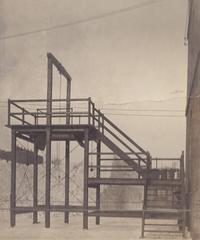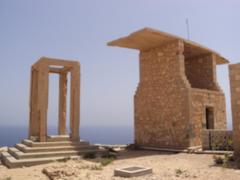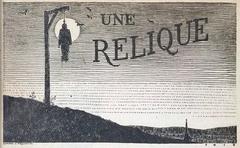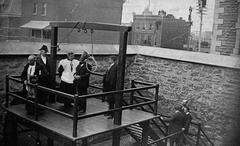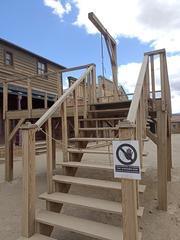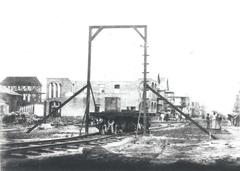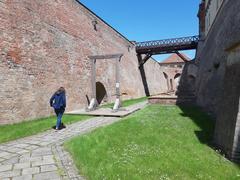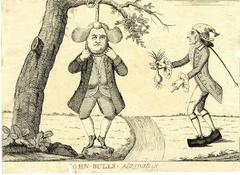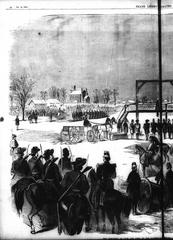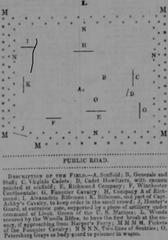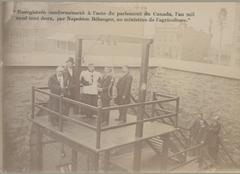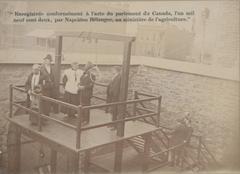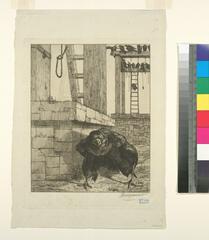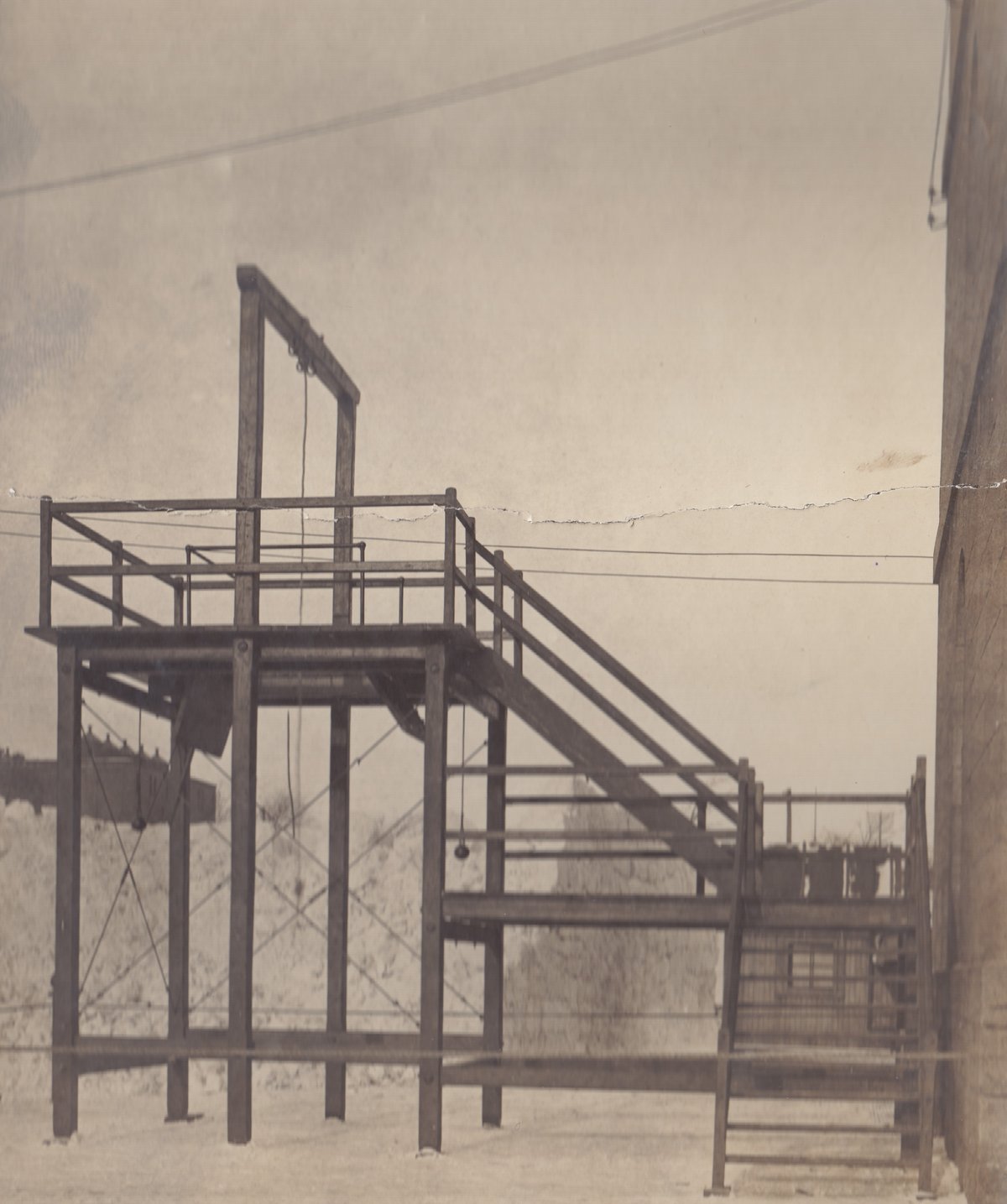
Visiting Gallows Třebíč, Czechia: Complete Guide to Tickets, Hours, and History
Date: 14/06/2025
Introduction: The Gallows of Třebíč—A Window Into Czech Judicial History
Třebíč, a picturesque town in the Vysočina Region of Czechia, is celebrated for its rich cultural tapestry, UNESCO-listed Jewish Quarter, St. Procopius Basilica, and the Jewish Cemetery. Yet, among these celebrated monuments stands another, less-visited but profoundly meaningful landmark: the Třebíč Gallows (Šibeniční vrch). Perched on a hill just outside the town center, this historical site is a powerful testament to the town’s judicial and social evolution, serving as both a symbol of medieval authority and a place of reflection on the intersection of justice, culture, and community life.
The Gallows site, accessible year-round for free, invites visitors on a contemplative journey—combining history, panoramic views, and the somber legacy of early modern law. Its stone pillars and interpretive signage have transformed the former place of capital punishment into a site for education and remembrance, set against the backdrop of Třebíč’s multicultural heritage.
For travelers interested in legal history, cultural coexistence, or the broader story of Central Europe, the Třebíč Gallows are an evocative and essential stop. Practical visitor tips, site details, and further resources can be found through the official Visit Třebíč tourism portal and heritage articles such as Rachel’s Ruminations on Třebíč.
Table of Contents
- Introduction
- Historical Context of the Třebíč Gallows
- Site Features and Preservation
- Visitor Information
- Local Memory and Folklore
- Practical Tips for Visitors
- Nearby Attractions and Services
- Photography, Visual Media, and Environmental Care
- Essential Contacts and Emergency Info
- Frequently Asked Questions (FAQ)
- Conclusion and Next Steps
- References and Useful Links
Historical Context of the Třebíč Gallows
Třebíč has long been a crossroads of cultures and legal traditions. Its UNESCO-listed Jewish Quarter, St. Procopius Basilica, and Jewish Cemetery speak to centuries of religious and social coexistence (Rachel’s Ruminations). The Gallows, located atop Šibeniční vrch, are rooted in this context: in medieval and early modern towns, the right to administer capital punishment, or “hrdelní právo,” was a privilege granted by monarchs to self-governing towns, marking their autonomy and enforcing local law.
Symbolism and Social Order
The prominent placement of the gallows on a hill made it a visual reminder of justice, intended as both warning and moral lesson. Public executions were community events, attracting townspeople and villagers to witness the upholding of law and the consequences of crime (World Atlas). The rituals surrounding executions—processions, last confessions, and communal prayers—were deeply woven into local culture and reinforced the authority of the magistrates.
Multicultural Legal Heritage
Třebíč’s unique blend of Christian and Jewish traditions extended into legal matters. While the Jewish community maintained its own courts for civil and religious issues, ultimate authority—especially over life-and-death cases—rested with the municipal (Christian) authorities. Thus, the Gallows not only embody judicial history but also the complex interplay between cultures in Třebíč (Rachel’s Ruminations).
Public Executions and Local Life
Executions served as both deterrent and spectacle, with rituals designed to reinforce social order and provide closure to the community. The Gallows became woven into local memory and folklore, their shadow lingering even as judicial practices modernized.
Site Features and Preservation
Physical Remains
Today, visitors will find stone pillars and foundational remnants marking the original location of the gallows. Archaeological discoveries—such as iron shackles and rope fragments—attest to the site’s historical use. Interpretive signage in Czech and English provides context, detailing the evolution of justice and the role of the gallows in Třebíč’s past.
Interpretation and Education
While less developed than Třebíč’s main heritage monuments, the Gallows are included in local history trails and educational materials. The site is free of commercial development, offering a quiet space for reflection and learning about the transformation of justice from medieval times to the present (Trending Headline).
Visitor Information
Location, Access, and Hours
- Location: The Gallows (Šibeniční vrch) lie northwest of Třebíč’s historic center, a 20–30 minute uphill walk from the Jewish Quarter and St. Procopius Basilica.
- Access: Marked hiking and cycling trails lead to the site. Parking is available at the base of the hill (unpaved, weather-dependent).
- Public Transport: No direct bus service; plan to walk from the train station or center (Visit Třebíč).
- Hours and Tickets: Open-air site, accessible 24/7, year-round, with no entrance fees or ticketing.
Guided Tours and Amenities
- Guided Tours: Occasional themed walks by local heritage groups may include the Gallows; contact the Třebíč tourist office for details.
- Amenities: No restrooms or refreshment stands at the site. Facilities are available in town (especially near Karlovo Square and the Painted House information center).
Integrating the Gallows into Your Třebíč Visit
- Combine with Key Sites: The Gallows complement visits to the Jewish Quarter, St. Procopius Basilica, the Jewish Cemetery, and Třebíč Castle (Amazing Czechia).
- Nearby Amenities: Accommodation options include heritage hotels like Hotel Joseph 1699 and Hotel Kocour (Time Travel Turtle).
Visitor Etiquette and Safety
- Respect the solemn history of the site: avoid loud conversation, littering, and vandalism.
- Photography is welcome—but be mindful of the site’s significance.
Local Memory and Folklore
The Gallows hill has inspired local legends—stories of restless spirits, mysterious lights, and omens, reflecting the site’s place in community memory and regional folklore.
Practical Tips for Visitors
Best Times to Visit
- When to Go: Late spring through early autumn (May–September) offers the best weather and views. Early mornings and late afternoons provide tranquility and optimal light for photography.
What to Bring
- Comfortable walking shoes for uneven paths.
- Weather-appropriate clothing and sun protection.
- Water and snacks (no vending on-site).
- Camera or binoculars for panoramas and birdwatching.
Accessibility
- The trail is unpaved and moderately steep, with no handrails or ramps—challenging for those with reduced mobility. Consult the tourist office for accessible viewpoints (Visit Třebíč).
Nearby Attractions and Services
- UNESCO Sites: Jewish Quarter, St. Procopius Basilica, and Jewish Cemetery.
- Other Attractions: Třebíč Castle, Charles Square, local museums, and seasonal festivals (The Euro Road Trip).
- Services: Tourist information, restrooms, and refreshments are available in the town center.
- Day Trips: Telč, Žďár nad Sázavou, and other Vysočina region highlights.
Photography, Visual Media, and Environmental Care
- Photography: Encouraged; use descriptive alt text on shared images (e.g., “Panoramic view from Gallows of Třebíč historical site”).
- Drone Use: Must comply with Czech regulations (Adventures of Ace).
- Environmental Respect: Stay on marked trails to protect the landscape.
Essential Contacts and Emergency Info
- Tourist Information Center: Painted House, Karlovo náměstí (Visit Třebíč)
- Emergency Services: Dial 112
- Museum of the Vysočina Region: For historical and educational inquiries (Amazing Czechia)
Frequently Asked Questions (FAQ)
Q: Is the Gallows site free to visit?
A: Yes, there are no entrance fees or tickets required.
Q: Can I visit at any time of day?
A: The site is open 24/7 year-round, but daylight hours are safest.
Q: Is the Gallows accessible for those with disabilities?
A: Access is limited; the path is unpaved and steep.
Q: Are there regular guided tours?
A: Not regularly; check with the tourist office for scheduled heritage walks.
Q: What other sites should I see in Třebíč?
A: Don’t miss the Jewish Quarter, St. Procopius Basilica, Jewish Cemetery, and local museums.
Conclusion and Next Steps
The Gallows of Třebíč offer a profound lens on the region’s judicial and cultural evolution. With year-round, free access and a location close to other major attractions, this site is a meaningful stop for travelers seeking to understand Central European history in depth. Approach with respect and curiosity, and let the Gallows deepen your appreciation for Třebíč’s layered past.
For the latest updates, download the Audiala app, visit the official Třebíč tourism portal, and follow local tourism channels. Plan your journey today and experience the unique legacy of the Gallows—where history, culture, and reflection meet.
References and Useful Links
- Rachel’s Ruminations – Visiting the Třebíč Gallows: History, Hours, and Tips
- Amazing Czechia – Gallows of Třebíč Visiting Hours, Tickets, and Visitor Guide
- Visit Třebíč Official Tourism Portal
- Time Travel Turtle – Visit Třebíč
- The Euro Road Trip – Třebíč Sights
- Trending Headline – The Gallows
- World Atlas – UNESCO World Heritage Sites in Czechia
- Adventures of Ace – Visiting the Czech Republic
Plan your visit, share your experience, and delve deeper into the stories that shaped Třebíč—one of Czechia’s hidden historical treasures.
